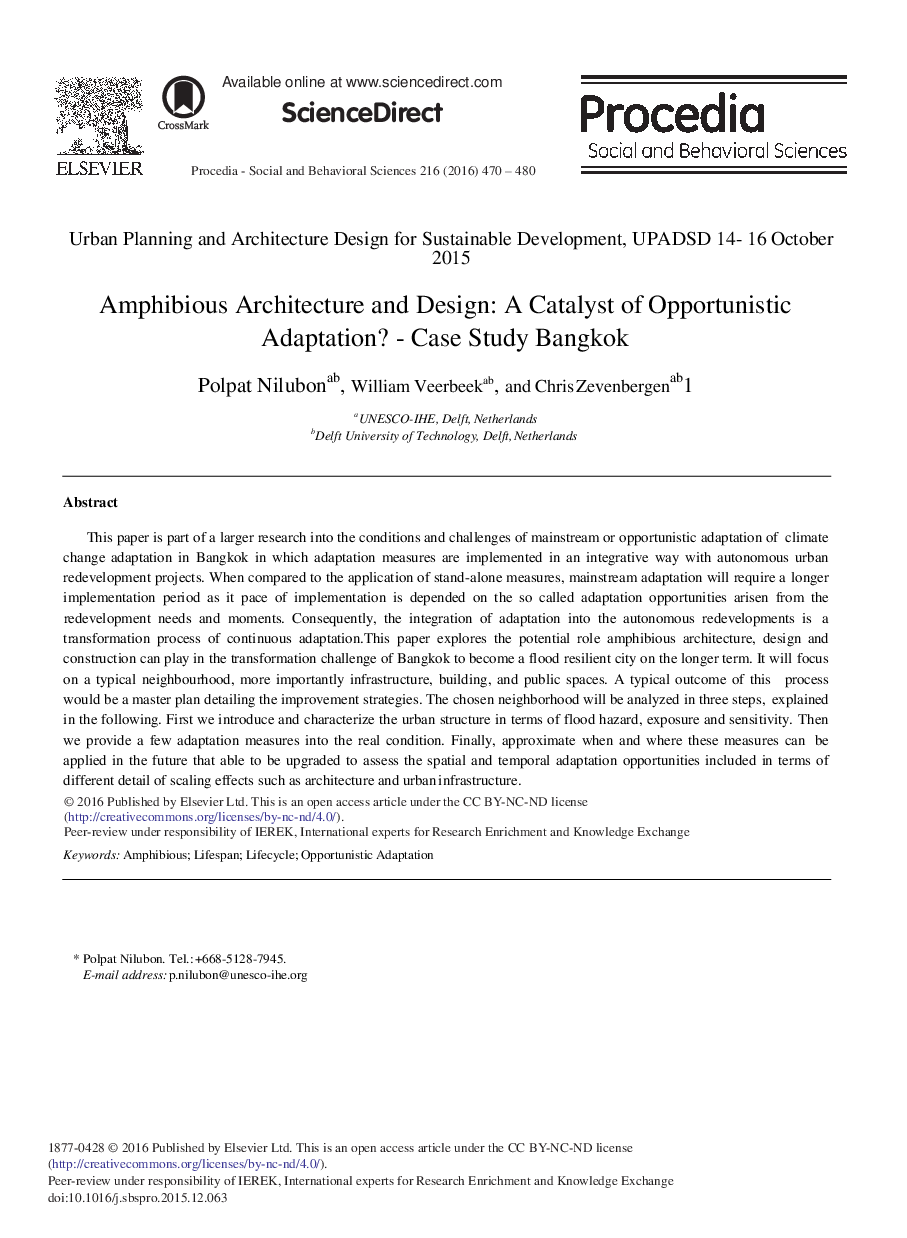| Article ID | Journal | Published Year | Pages | File Type |
|---|---|---|---|---|
| 1108754 | Procedia - Social and Behavioral Sciences | 2016 | 11 Pages |
This paper is part of a larger research into the conditions and challenges of mainstream or opportunistic adaptation of climate change adaptation in Bangkok in which adaptation measures are implemented in an integrative way with autonomous urban redevelopment projects. When compared to the application of stand-alone measures, mainstream adaptation will require a longer implementation period as it pace of implementation is depended on the so called adaptation opportunities arisen from the redevelopment needs and moments. Consequently, the integration of adaptation into the autonomous redevelopments is a transformation process of continuous adaptation. This paper explores the potential role amphibious architecture, design and construction can play in the transformation challenge of Bangkok to become a flood resilient city on the longer term. It will focus on a typical neighbourhood, more importantly infrastructure, building, and public spaces. A typical outcome of this process would be a master plan detailing the improvement strategies. The chosen neighborhood will be analyzed in three steps, explained in the following. First we introduce and characterize the urban structure in terms of flood hazard, exposure and sensitivity. Then we provide a few adaptation measures into the real condition. Finally, approximate when and where these measures can be applied in the future that able to be upgraded to assess the spatial and temporal adaptation opportunities included in terms of different detail of scaling effects such as architecture and urban infrastructure.
